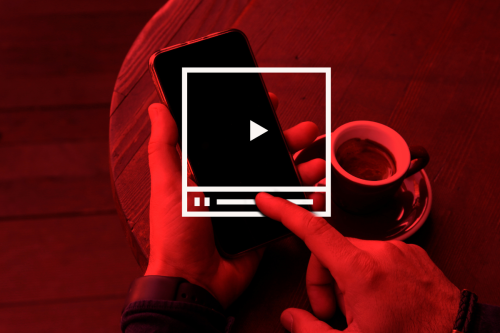Marketing and sales are a lot like relationship building. A series of steps must occur for a relationship to begin and get more serious.
Assuming the ultimate goal of dating is to find a partner and possibly settle down. In order to achieve that goal, a courting process must take place. Two people meet. They share a conversation, and if things go well, they exchange contact information. Then a first date is set up. If it’s successful, a second. And so on.
Getting people to buy your products or use your services is much the same. A misstep of many businesses is to try to get prospects to marry them on their first date. Or even worse, at first sight.
To avoid this, you must understand the sales funnel, and the functions of each key step in that funnel, which turns strangers into paying customers.
Understanding a Sales Funnel
Selling is easy; you just cut to the chase and get straight to the sales pitch, right?
Wrong.
Making a pitch straight out of the gate makes a great many false assumptions, the most important of which is that your prospects are ready to buy. They are usually not, and even if they are, it doesn’t mean that they are necessarily ready to buy from you.
A well-built sales funnel illustrates how prospects go from ‘who the heck are you?’ to ‘Yes. I want to buy.’
Read on to understand the four stages of a traditional sales funnel.
The AIDA Model: 4 Stages of a Sales Funnel
- Awareness: Prospects have just discovered your business and its products. Potential customers understand that they have a need for a product or service, but have not committed to a solution or a provider. They simply need to become aware that you exist as a candidate to solve their problem.
- Interest: The potential customer wants to learn more about your business and your offerings. In this stage, educate prospects more about your products without coming off as ‘salesy.’ It is also an opportunity to educate them on their pain points, which they may not fully understand.
- Decision: They now understand your business and the solution your offer. Trust has been established at this point, and they have been educated on why you are the right company to meet their needs.
- Action: The potential customer takes action, either to buy from you, or not.
4 Features of a Successful Sales Funnel
There are dozens of ways to marketing to your potential clients/customers. While a company can’t do them all, here are some near-universally beneficial steps to take.
1. Defined Target Audience
You need first to define your ideal customer profile. Think about what your target audience really wants to build a high-converting sales funnel.
What’s on your prospects’ minds that keep them awake at night? What do they like and dislike? Tap into these insights to grab their attention and address their needs on a personal level.
Look to your existing customers and your sales teams to create buyer profiles. Customer interactions with your sales rep, website, and social media profiles help you to understand them better. Prospects’ age, purchase behavior, location, and interests help establish your customer profile.
2. Organic Website Traffic
Statistics say that organic search accounts for over 50% of all website traffic. For this reason, prioritizing search engine optimization (SEO) can increase brand awareness and generate more leads in your sales funnel.
The higher you’re ranking on search results, the more people will interact with your business. And because the traffic is organic, you won’t spend much on paid ads.
3. Lead-Nurturing Email Campaigns
A high-converting sales funnel relies on your outreach efforts. You might have the best services in the industry, or your website might have heavy traffic. But still, it’s not enough to drive sales consistently.
Lead-nurturing email campaigns allow you to reach out to prospects with the information they care about and strengthen their relationship with your business. These campaigns should focus on moving prospects from the top to the bottom of the sales funnel.
Read More: Key Differences Between Transactional and Relational Sales
4. Lead-Conversion Campaigns
You’ve nurtured your prospects and gently pushed them to the bottom of the sales funnel. Next, convert them into paying customers. Do this by leveraging social proof, offering free samples, sharing product demos, or personalizing your offers to different categories of your audience.
By understanding your customers and implementing a strong sales funnel, you can create meaningful relationships and increase repeat business with your customers.
Andy Bush is President of Bush Marketing. Contact him today at 416-214-4298 or andy@bushmarketing.ca for a discussion about how Bush Marketing can help your website do more for your business.
Bush Marketing | Web Design Company Toronto | SEO Company Toronto | Call Today!
I am text block. Click edit button to change this text. Lorem ipsum dolor sit amet, consectetur adipiscing elit. Ut elit tellus, luctus nec ullamcorper mattis, pulvinar dapibus leo.








